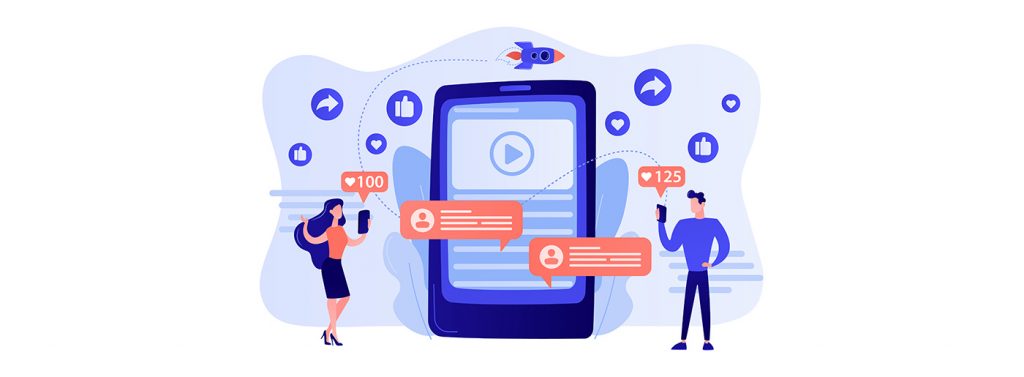Understanding Website Accessibility: Best Practices To Accommodate All Visitors
Accessibility is a crucial factor that ensures all online visitors, regardless of their abilities and limitations, can experience all of a site’s content and services. While accessible designs are becoming increasingly widespread for websites in different industries, some have yet to adopt vital elements to this principle. If you’re unsure about your website’s accessibility, read here to learn more. This guide will discuss all the best practices and guidelines for an accessible website.
Understanding Website Accessibility
Website accessibility is a design and development process that enables people with disabilities to interact, understand, and navigate a site’s content seamlessly and effectively. It involves various digital elements that accommodate different impairments or limitations, including visual, auditory, motor, and cognitive. This design principle aims to remove any user barrier, providing equal access to a site’s online content. Many small businesses make the mistake of thinking that offering accessibility is optional. However, in certain countries, skipping this feature can cause legal issues for organizations if they’re found guilty.
In the US, they have the ADA or Americans with Disabilities Act. The ADA’s Title III prohibits discrimination against people based on their disability in places of public accommodations, commercial facilities, and private entities or organizations.
Websites generally fall under the public accommodations category, meaning site owners are legally obligated to accommodate online users with disabilities. Website accessibility encompasses various user impairments and limitations. These include blindness, poor vision, learning or cognitive impairment, deafness, hearing loss, speech and physical disabilities. Meanwhile, aside from legal compliance, many companies offer accessibility voluntarily because it provides numerous benefits. These include the following.
Increased Website Traffic
As mentioned above, offering accessibility means equal access to various user limitations. Incorporating certain design elements to accommodate different needs helps increase traffic, engagement, and conversion.
Better Brand Reputation
Accommodating online users with different needs is an excellent way to showcase how well brands care about their target audience. When that happens, they increase their chances of elevating their market reputation, which helps attract more customers, investors, and other significant parties.
Improved SEO Rankings
Accessibility features often enhance a visitor’s overall user experience, making navigating and engaging with the website more accessible. Search engine platforms like Google recognize these interactions among their many ranking factors, meaning providing them increases a site’s chances of gaining better placements in the search results.
When that happens, brands improve their organic visibility and reach more people online.
Moreover, accessible websites tend to have lower bounce rates. Search engines also consider this a ranking factor since it indicates that an issue in the website is driving visitors away. Low bounce rates can positively influence a site’s search engine ranking.
Creating an Accessible Website
For those seeking guidance, the Web Accessibility Initiative (WIP) has created a list of factors for companies or organizations through the Web Content Accessibility Guidelines (WCAG).
The WIP is part of The World Wide Web Consortium (W3C), a non-profit group that creates and implements all the global website standards.
According to the WCAG, websites must fall within the following categories to be considered accessible.
Perceivable
Online users must know a website’s content, information, and services. Being perceivable doesn’t necessarily mean seeing with one’s eyes. Visitors must be able to perceive every element within the website based on their disabilities or limitations. For instance, the website must be screen-reader-ready to help blind individuals or those with low vision to view the pages from their perspective.
Operable
Websites must allow all users to leverage every part of their functionality. From navigating each page to interacting with every button or link, visitors must be able to operate the website even with their impairments. This is a crucial factor that, if done improperly, risks driving audiences away and increasing bounce rates significantly.
Understandable
Organizations must make their written and graphic design content easy to understand by all visitors. This includes readable and predictable text, consistent navigation, and input assistance for online users of all mental capacities and limitations. This principle must also apply to the site’s structure, meaning every page must be intuitively organized for visitors to understand its purpose easily.
Robust
Finally, every piece of content on a website must be easily consumed by all visitors, including those using various assistive technologies, like screen readers, braille, and text-to-speech tools. It must have a solid backend structure with valid and well-formed code for better compatibility with such programs.
Best Design Practices To Offer Better Accessibility
We will provide the best design practices to help you implement accessibility.
Color Contrast
Color vision deficiency, or color blindness, is a common obstacle that many online users who suffer from such a condition face. This issue is genetic, but other conditions, including aging and certain chronic illnesses, are known to cause such a disability. As people age, distinguishing specific colors may become more complicated, making certain website content unreadable.
Color contrast in websites is crucial to accommodate visitors with color blindness and poor eyesight. One of the best ways to achieve excellent color contrast is to ensure a strong contradiction between the text and backdrop colors. That way, visitors can perceive the content presented.
Black text on a white background offers the highest readability for visitors. However, you can also use black on yellow and yellow on blue. For better contrast, the WCAG specifies a ratio of at least 4.5:1 on standard texts and 3:1 on bigger texts. If you want to test your site’s color contrast, you can check WCAG Contrast Checker. Aside from that, you can use other sites and plugins to confirm if your pages have the proper contrast.
Alternative Texts
Visual elements like images help elevate a website’s overall aesthetic. However, pictures are an accessibility barrier for blind individuals or those with low or poor vision. That’s not to say that you remove images altogether. Alt texts can accommodate visitors with poor eyesight. Alt texts can help describe any visual element through screen readers and other assistive technologies. This feature will allow online users with visual impairments to comprehend an image’s information and determine its placement on the page.
Alt texts can be added easily through the HTML image tag. The challenge is to create a compelling description that accommodates online users with visual disabilities. The key is to be concise and accurate. It must convey all the essential information of the image. Let’s take a look at this image below as an example.

A wrong alt text for this example would be “a picture of three people.” It’s terrible because it provides little to no information about the context of the photo, preventing users who rely on assistive technologies from understanding its purpose.
On the other hand, a good alt text for this image would be “Two professionals discussing strategies with their colleagues in a well-lit conference room.” This one offers specific information about the image’s content compared to the description above.
Multimedia Captions and Transcripts
Videos and other multimedia content help increase a website’s engagement. Unfortunately, these materials may create barriers for online users who have vision and auditory disabilities. To make your multimedia materials accessible, the WCAG advises websites to add subtitles and transcripts to their content. Subtitles will help online users with hearing impairments understand the context of the video better.
Meanwhile, transcripts help describe visual-only or non-spoken parts like images, gestures, and changes in settings to visitors with poor vision. The key is synchronizing these accessibility features with the video and audio tracks to help all users understand the materials effectively. They must also be accurate and complete.

Descriptive Heading
Headers are excellent components to boost a site’s user experience and search engine rankings. They help make pages more organized and easier to navigate, even for those using screen readers and other assistive devices.
Each heading must accurately summarize the content that follows it and be descriptive so users can understand the website’s arrangement or structure. This could be achieved using HTML heading tags (H1 – H6) in a logical sequence.
For instance, if you want to put subsections under an H2 heading, you must put them in H3, etc. See the example below to understand better how heading tags should be used.
[h1] Title
[h2] Section
[h3] Subsection 1
[h3] Subsection 2
[h3] Subsection 3
This example above helps break down the content into its significant parts, making it easier for all visitors to understand its purpose. Let’s see what it would look like if you use heading tags incorrectly.
[h1] Title
[h3] Section
[h2] Subsection 1
[h3] Subsection 2
[h4] Subsection 3
This example demonstrates how confusing the content structure will be with improper heading tags.
Keyboard Navigation
Specific impairments prevent some individuals from interacting with a website using a mouse. For instance, those with poor eyesight will find it difficult to move the cursor on the screen and jump from page to page. With keyboard shortcuts, navigating a website is accessible even without the mouse. Incorporating keyboard navigation is an excellent way to accommodate many online users with different impairments. For example, visitors must quickly jump from section to section and access certain features using the Tab, Spacebar, and Enter keys.
When incorporating keyboard shortcuts, ensure disabled users can access various interactive elements within the website. These include URLs, anchor texts, dropdown menus, widgets, forms, dialog boxes, and call-to-actions (CTAs).
Resizing
An accessible website must allow online users to easily resize content without compromising functionality and readability. Ideally, your site can be zoomed up to 200 percent without negatively affecting any element. This function is crucial for older adults with poor eyesight, who will have difficulty perceiving a website’s content as they age.
It’s even more vital now that more seniors in the US are rapidly transitioning to smartphones, mainly because the American Association of Retired Persons (AARP) offers discounts on mobile devices for their members. Your site must seamlessly function even when zoomed in at a significant percentage to accommodate seniors on their chosen AARP cell phone.
ARIA Attributes
The Accessible Rich Internet Applications, or ARIA, is a set of roles, states, or attributes you can add to your HTML elements to make your site more accessible. With ARIA, you can give additional information to screen readers and other assistive technologies, accommodating as many disabled individuals as possible.
For instance, ARIA provides roles like “menu” or “search” to help describe the type of element or function the visitor encounters. It can also give status information on a particular feature. For example, it can inform users if a box on their forms has been checked or completed.
Testing
This step is crucial to ensure your website provides the best accessibility features for different disabilities or limitations. The good news is that many tools are available to help you gauge if your website complies with the WCAG.
These platforms include WAVE, Axe, Google Lighthouse, BrowserStack, Tenon, and A11Y Accessibility Checker. Go through your site and see if it’s optimized for the accessibility features mentioned above. Check for all types of disabilities that may hinder an individual from interacting with a website.
Provide a Fully Accessible Website
Prioritizing website accessibility is not just a legal or ethical obligation. It’s a vital investment that allows businesses to perform well in their specific industry. Catering to a diverse group of online users with different needs provides an excellent way to connect better with existing and potential customers. It can also help brands gain a competitive advantage in today’s highly competitive digital landscape, where meaningful experiences are paramount.
The key is to stay current with the latest accessibility guidelines and adapt accordingly. Testing your website and ensuring it remains compliant constantly would also be helpful. It will be tedious, but providing equal access to all online users is necessary.




Leave a Reply